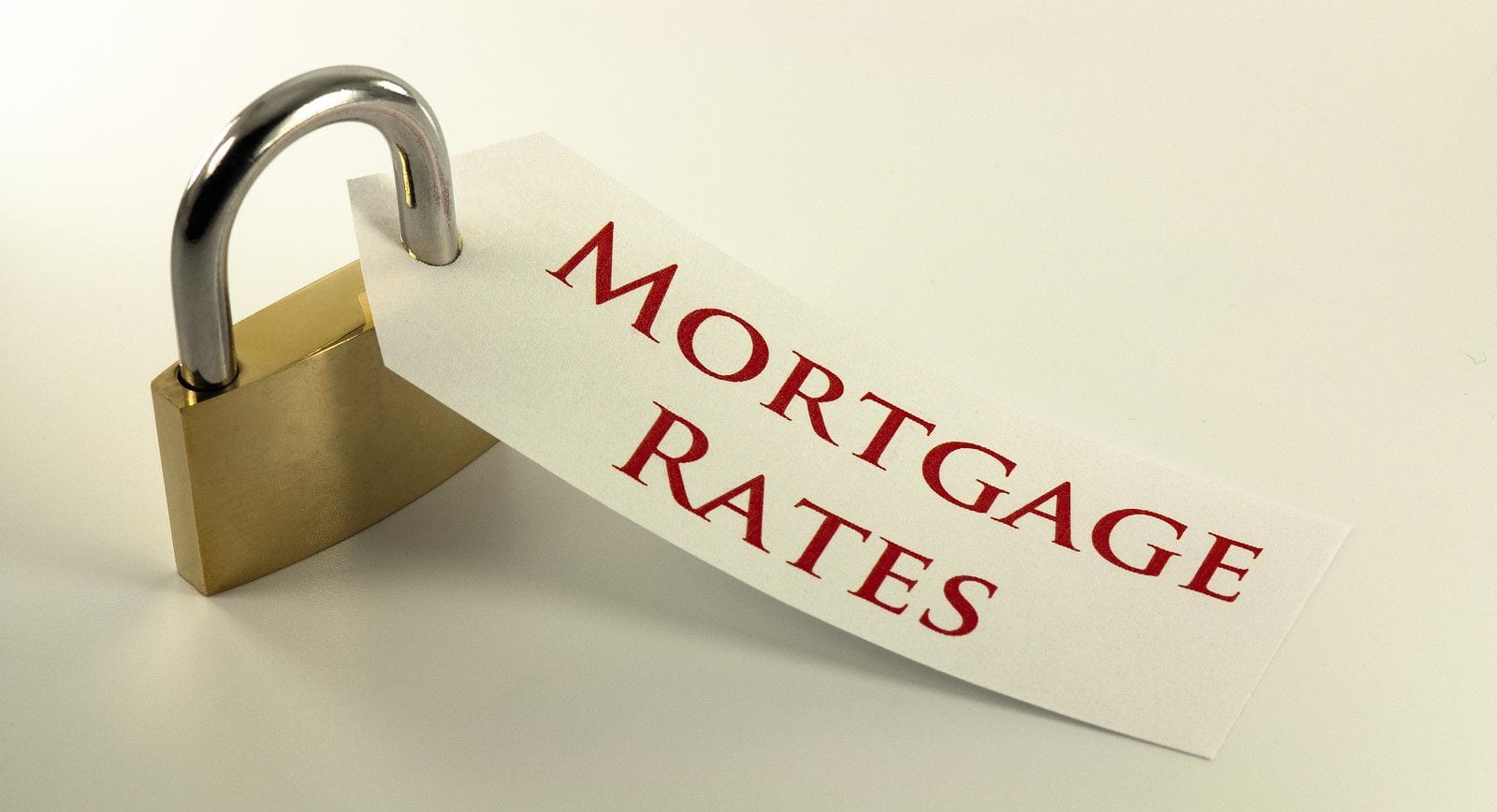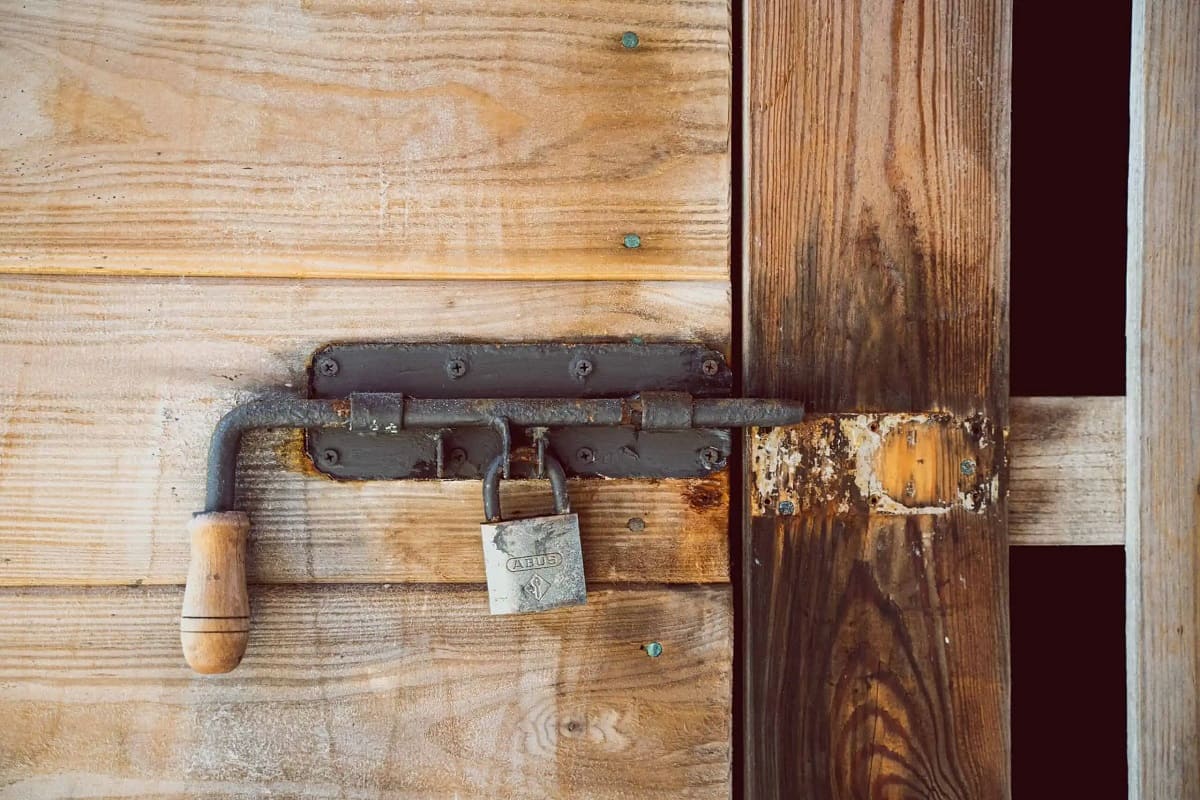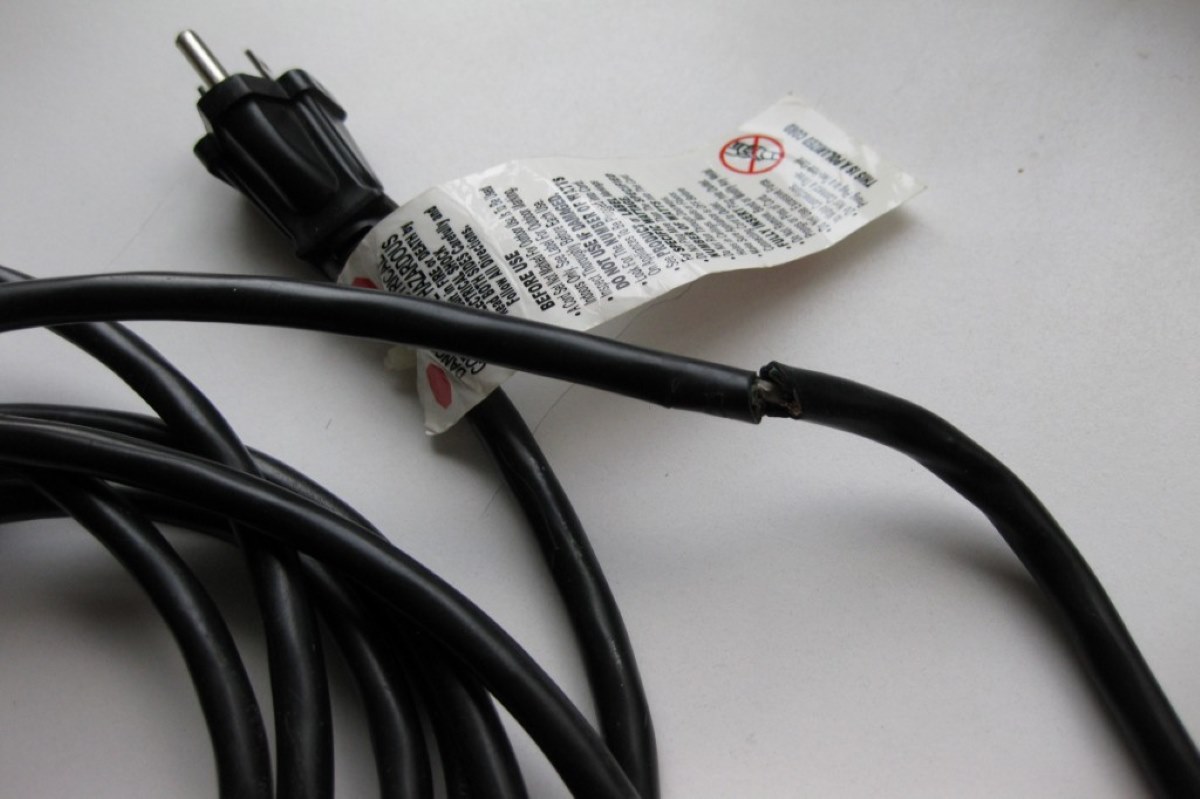Home>diy>Building & Construction>When Can You Lock In A Mortgage Rate When Building A Home


Building & Construction
When Can You Lock In A Mortgage Rate When Building A Home
Modified: February 25, 2024
Discover when you can secure a mortgage rate while constructing your dream home. Learn more about the process and timing for locking in a rate.
(Many of the links in this article redirect to a specific reviewed product. Your purchase of these products through affiliate links helps to generate commission for Storables.com, at no extra cost. Learn more)
Introduction
When embarking on the journey of building your dream home, it’s important to understand the ins and outs of the mortgage process. One key aspect to consider is securing a favorable mortgage rate. But unlike purchasing an existing home, the process of locking in a mortgage rate when building a home can be quite different.
Understanding how mortgage rates work and when you can lock in a rate is crucial for both your peace of mind and financial stability. In this article, we will delve into the intricacies of mortgage rates when building a home and provide insights on when and how you can secure a favorable rate.
So, let’s explore the world of mortgage rates and discover the strategies you can employ to ensure you get the best rate possible when building your dream home.
Key Takeaways:
- Timing is crucial when locking in a mortgage rate for a home construction project. Factors such as construction timeline, market conditions, and lender policies play a significant role in determining the opportune moment to secure a favorable rate.
- Communication, proactive planning, and understanding potential challenges are essential when navigating the complexities of locking in a mortgage rate for building a home. By staying informed and working closely with experts, you can increase your chances of securing a stable and favorable mortgage rate.
Understanding Mortgage Rates
Before we dive into the complexities of locking in a mortgage rate when building a home, let’s first understand the basics of mortgage rates. Simply put, a mortgage rate is the interest rate charged by a lender on the amount you borrow to purchase a property.
Mortgage rates can vary significantly and are influenced by various factors, including economic conditions, inflation, the borrower’s credit score, and market conditions. Typically, lenders offer two types of mortgage rates: fixed-rate and adjustable-rate.
A fixed-rate mortgage offers a consistent interest rate over the life of the loan. This means your monthly mortgage payments remain the same throughout the term of your loan, providing stability and predictability.
On the other hand, an adjustable-rate mortgage (ARM) features an interest rate that can fluctuate over time. In the initial years, the rate remains fixed, but after a specific period, it adjusts based on prevailing market conditions. This type of mortgage can provide flexibility but carries the risk of potentially higher payments in the future.
It’s important to understand the different types of mortgage rates and choose one that aligns with your financial goals and risk tolerance.
Now that we have a basic understanding of mortgage rates, let’s explore how the process differs when building a home.
Building a Home: A Different Scenario
Building a home presents a unique scenario when it comes to obtaining a mortgage. Unlike purchasing an existing home, where the timeline is relatively straightforward, building a home involves multiple stages and uncertainties. This can impact the process of locking in a mortgage rate.
When building a home, you typically go through three main phases: pre-construction, construction, and post-construction. Each phase presents its own set of challenges and opportunities when it comes to securing a favorable mortgage rate.
In the pre-construction phase, you work with architects, contractors, and builders to design your home and obtain the necessary permits and approvals. During this stage, you may have the option to lock in a mortgage rate, although it is not always guaranteed.
The construction phase involves the actual building of your home. This stage can take several months or even longer, depending on the size and complexity of the project. Throughout the construction process, your mortgage rate may be subject to change, depending on market conditions and the duration of the construction period.
Finally, in the post-construction phase, your home is completed, and you finalize the mortgage terms and payments. During this stage, you may have the opportunity to lock in a mortgage rate again, although it may depend on the lender’s policies and prevailing market conditions.
Building a home requires careful planning and coordination, and the process of locking in a mortgage rate adds an additional layer of complexity. Understanding when and how to lock in a rate is crucial to ensure you secure the best terms and avoid any unexpected surprises.
In the next section, we will explore the importance of locking in a mortgage rate and why it matters when building a home.
The Importance of Locking in a Mortgage Rate
When building a home, the process can span several months or even years. During this time, mortgage rates can fluctuate due to various factors such as changes in the economy, interest rate trends, and market conditions. This volatility underscores the importance of locking in a mortgage rate when building a home.
Locking in a mortgage rate means that the lender guarantees a specific interest rate for a certain period of time, typically ranging from 30 to 90 days. This allows you to secure a favorable rate and protects you from potential rate increases in the future.
There are several benefits to locking in a mortgage rate when building a home:
- Protection against rate increases: By locking in a rate, you are shielded from potential increases in mortgage rates during the construction period. This ensures that your monthly mortgage payments remain stable and predictable, even if rates rise.
- Budgeting and financial planning: Knowing your exact mortgage rate allows you to accurately budget and plan for your monthly expenses. This is particularly crucial when building a home, as construction costs and timelines can be subject to unforeseen changes.
- Peace of mind: Locking in a mortgage rate provides peace of mind, knowing that you are protected from potential rate fluctuations. It allows you to focus on other aspects of building your home without worrying about the impact of changing interest rates.
However, it’s important to note that locking in a mortgage rate may come with certain conditions and fees. Lenders may charge a rate lock fee, which is typically a percentage of the loan amount, to secure the rate. It’s essential to carefully review and understand the terms and conditions associated with rate locks before proceeding.
In the next section, we will explore the factors that determine when you can lock in a mortgage rate when building a home.
Factors that Determine When You Can Lock in a Mortgage Rate
Locking in a mortgage rate when building a home is influenced by several factors. These factors not only determine the timing of when you can lock in a rate but also impact the terms and conditions associated with the rate lock. Let’s explore the key factors that come into play:
Construction timeline: The duration of the construction process plays a significant role in determining when you can lock in a mortgage rate. If your construction timeline is relatively short, you may be able to secure a rate at the beginning of the project. However, if the construction is expected to take longer, you may need to wait until closer to the completion of the home.
Market conditions: Mortgage rates are influenced by market conditions, such as the overall economy, inflation rates, and the demand for housing. The prevailing market conditions at the time of your rate lock can impact the interest rate offered by lenders. It’s essential to keep an eye on market trends and work closely with your lender to identify the opportune time to lock in your rate.
Lender policies: Each lender may have its own policies and guidelines when it comes to rate locks. Some lenders may offer longer rate lock periods or shorter rate lock expiration dates. It’s important to thoroughly discuss and understand the specific policies of your lender to ensure you can lock in a rate that aligns with your construction timeline.
Creditworthiness: Your creditworthiness and financial qualifications also come into play when determining when you can lock in a mortgage rate. Lenders typically consider factors such as credit score, income stability, and debt-to-income ratio when offering rate lock options. Demonstrating a strong financial profile can increase your chances of securing a favorable rate lock.
Down payment and loan amount: The size of your down payment and the loan amount can also impact when you can lock in a mortgage rate. Some lenders may require a specific down payment percentage before allowing you to lock in a rate, while others may have restrictions based on the loan amount. Consult with your lender to understand their requirements in relation to your financial situation.
It’s important to note that the specific combination of these factors can vary from lender to lender. Therefore, it’s advisable to engage in thorough research and consult with multiple lenders to explore your options and find the best fit for your needs.
In the next sections, we will discuss the potential opportunities for rate locks during each phase of the homebuilding process.
You can typically lock in a mortgage rate when building a home once you have a signed construction contract or when the home is near completion. It’s important to work closely with your lender to determine the best time to lock in your rate.
Pre-Construction Phase: Potential Locking Opportunities
The pre-construction phase of building a home presents potential opportunities for locking in a mortgage rate. While it is not guaranteed, there are circumstances where lenders may allow you to secure a rate before construction begins. Here are some potential locking opportunities during the pre-construction phase:
Rate lock extensions: If you anticipate a longer pre-construction phase, you may be able to secure a rate lock extension. This allows you to lock in a rate for an extended period, providing protection against potential rate fluctuations during the pre-construction phase.
Float-down options: Some lenders offer float-down options, which allow borrowers to lock in a rate upfront but also benefit from a lower rate if the market rates decrease during the construction phase. With a float-down option, you have the flexibility to secure an initial rate and potentially take advantage of a better rate if it becomes available.
Flexibility based on loan programs: Certain loan programs may offer more flexibility in terms of rate locks during the pre-construction phase. For example, if you are using a construction-to-permanent loan, your lender may allow you to lock in the permanent mortgage rate upfront, providing peace of mind throughout the construction process.
It’s important to consult with your lender early in the pre-construction phase to explore the rate lock options available to you. By understanding the possibilities and limitations, you can strategically plan for a rate lock that aligns with your construction timeline and interest rate expectations.
Next, we will discuss the considerations and timing for rate locks during the construction phase of building your home.
Construction Phase: Timing Your Rate Lock
Timing is critical when it comes to locking in a mortgage rate during the construction phase of building your home. Since the construction timeline can vary, it’s important to align your rate lock with the progress of the project. Here are some considerations to keep in mind:
Consult with your builder: Communicate with your builder to get a clear understanding of the estimated timeline for completing each phase of the construction. This will help you determine when it’s appropriate to consider a rate lock.
Monitor market conditions: Stay informed about the current market conditions and interest rate trends. If interest rates are low or expected to increase in the near future, you may want to lock in a rate earlier in the construction process.
Rate lock expiration: Take note of the expiration date of your rate lock. If the construction is expected to take longer than your rate lock period, you may need to consider extending the lock or timing it closer to the completion of the project.
Contingency plans: Building a home can be unpredictable, and unforeseen delays or circumstances can arise. It’s important to have contingency plans in place in case the construction takes longer than expected and your rate lock needs to be extended or reevaluated.
Keep in mind that while you may be able to secure a rate lock during the construction phase, the specific terms and conditions will vary depending on the lender and market conditions. Be prepared to provide updates on the progress of the construction and be prepared to sign any necessary documentation to finalize the rate lock.
Next, we will discuss the finalization of your mortgage rate during the post-construction phase of building your home.
Post-Construction Phase: Finalizing Your Mortgage Rate
The post-construction phase of building your home is the stage where you finalize your mortgage rate. It’s the last opportunity to secure a rate that will determine your monthly mortgage payments for the duration of your loan. Here are some important steps to consider during this phase:
Review your rate lock: If you locked in a mortgage rate earlier in the construction process, review the terms and conditions of your rate lock. Take note of the expiration date and any specific requirements or fees associated with the rate lock.
Revisit market conditions: Before finalizing your mortgage rate, assess the current market conditions and interest rate trends. If rates have significantly decreased since you initially locked in your rate, you may want to explore the possibility of renegotiating for a lower rate.
Secure a mortgage commitment: Work closely with your lender to secure a formal mortgage commitment. This is when the lender commits to providing you with the financing you need for your home construction. During this process, you will need to provide any necessary documentation and information required by the lender.
Lock in your rate: Based on market conditions and your lender’s policies, finalize your mortgage rate. This typically involves signing the necessary paperwork to secure your rate, including any amendments or extensions to the rate lock if applicable.
It’s important to be proactive during the post-construction phase and remain in close communication with your lender. This will help ensure a smooth transition from the construction phase to the finalization of your mortgage rate.
Remember, timing is crucial during each phase of the homebuilding process. By staying informed, working closely with your lender, and being prepared for any potential changes or extensions, you can increase your chances of securing a favorable mortgage rate when building your dream home.
In the next section, we will address common challenges that may arise when locking in a mortgage rate and provide some potential solutions.
Common Challenges and Solutions in Locking in a Mortgage Rate
Locking in a mortgage rate when building a home can present its fair share of challenges. It’s important to be aware of these challenges and the potential solutions to overcome them. Let’s discuss some common challenges and their corresponding solutions:
Construction delays: One of the most common challenges in the homebuilding process is unexpected construction delays. These delays can impact the timing of your rate lock, potentially leading to expired rate locks or the need for rate lock extensions. To mitigate this challenge, work closely with your builder to set realistic timelines and have contingency plans in place.
Market volatility: The volatility of the housing market and interest rates can make it challenging to determine the perfect time to lock in a mortgage rate. To tackle this challenge, it’s important to stay informed about market trends and work closely with a knowledgeable mortgage lender who can guide you through the fluctuating market conditions.
Credit changes: Your creditworthiness plays a significant role in obtaining a favorable mortgage rate. However, during the construction phase, there may be changes in your credit profile due to new debt, unexpected expenses, or fluctuations in your credit score. To minimize the impact of credit changes, maintain responsible financial habits, keep an eye on your credit score, and consult with your lender to understand how any changes may affect your rate lock.
Loan program limitations: Different loan programs may have limitations or restrictions when it comes to rate locks during the construction phase. Some loan programs may be better suited for building a home, offering more flexibility in rate locking options. It’s essential to thoroughly research and explore loan programs that align with your unique needs and circumstances.
Communication gaps: Effective communication with your builder, lender, and other stakeholders is crucial to ensure a smooth rate lock process. Miscommunications or delays in sharing information can lead to missed opportunities or misunderstandings. Maintain open lines of communication and provide timely updates to all parties involved in the process.
By proactively addressing these common challenges and working closely with your builder and lender, you can navigate through the complexities of locking in a mortgage rate when building a home.
Now, let’s conclude our discussion on locking in a mortgage rate when building a home.
Read more: When Building A Home, When Do You Pay
Conclusion
Building your dream home is an exciting and fulfilling endeavor. When it comes to financing your home construction, understanding the process of locking in a mortgage rate is essential. While it may differ from purchasing an existing home, locking in a mortgage rate when building a home provides stability and peace of mind throughout the construction process.
Throughout this article, we have discussed the importance of locking in a mortgage rate, the factors that determine when you can lock in a rate, and the potential opportunities and challenges during each phase of the homebuilding process.
It’s crucial to be proactive, monitor market conditions, and maintain open communication with your builder and lender. By doing so, you can increase your chances of securing a favorable mortgage rate that aligns with your construction timeline and financial objectives.
Remember to consider factors such as construction delays, market volatility, credit changes, and loan program limitations. These variables may impact the timing and terms of your rate lock. However, by consulting with experts and understanding the options available to you, you can navigate through any challenges that arise.
Ultimately, securing a favorable mortgage rate when building your home ensures stability in your monthly mortgage payments and allows you to budget and plan effectively throughout the construction process and beyond.
Good luck in building your dream home, and may your mortgage rate lock provide you with confidence, peace of mind, and a solid foundation for your future.
Frequently Asked Questions about When Can You Lock In A Mortgage Rate When Building A Home
Was this page helpful?
At Storables.com, we guarantee accurate and reliable information. Our content, validated by Expert Board Contributors, is crafted following stringent Editorial Policies. We're committed to providing you with well-researched, expert-backed insights for all your informational needs.














0 thoughts on “When Can You Lock In A Mortgage Rate When Building A Home”